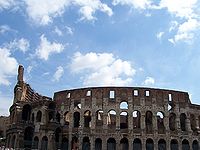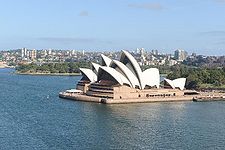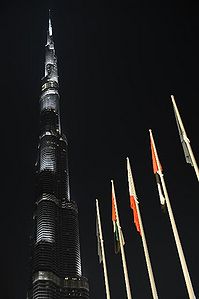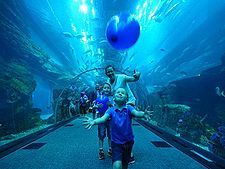Communication and Media Richness Assurance in High-performance Projects
In Communication, the term media richness (or information richness) refers to the amount of information a medium is capable of transmitting per given time unit.
Contents |
Abstract
With a plethora of available communication tools and often high degrees of freedom in their timing, choosing the right tool at the right time is non-trivial. Depending on the choice of tools and timing, results will vary from excellent through acceptable to undesired. However, as no universally successful recipe exists for ensuring positive outcomes, having a good understanding of the various communication options and their attributes will increase chances of making rational decisions accumulated and translating in turn into complex, fit-for-purpose solutions.
This article seeks to help project practitioners gain awareness of different communication tools and timing from a multi-disciplinary perspective. Disciplines covered are human nature, psychology, mathematics, linguistics and culture, with use of case studies and best practice. The diverse angles on the topic come together to bring a unified, in-depth understanding of media richness assurance aiding practitioners to achieve better results in their practical application in project implementations.
A key concept discussed in the article is Media Richness Theory (MRT), or Information Richness Theory. MRT describes how various communication media, such as face-to-face interaction and email correspondence, have different characteristics in terms of their information capacity and transfer rate as well as notable advantages and disadvantages.
Based on MRT, three case studies will be discussed to analyse chosen communication tools and methods in relation to project implementation. Conclusions from the case studies will guide the final article recommendations.
Introduction
Organisations rely on communication to successfully complete tasks (typically organised in projects) and fulfil purposes. Since success is typically measured on a linear scale, any overall project success could be considered the sum of a series of intermediary successes. Project purpose fulfilment thus quite simply relies on good stakeholder communication on a continuous basis throughout the entire project lifecycle.
What separates standard projects from high-performing projects is that in the latter communication effectiveness becomes vital not only regarding accuracy but also for speed. In other words, communication needs to happen both precisely and quickly, allowing superb utilisation of project resources to create outstanding project results.
Given the critical role of communication in high-performance projects, the question is ‘how does one go about designing and executing this complex project system of communication?’. As Daft and Lengel universally put it, "How do organizations perform this miracle?" [1]
Human Nature
To truly understand later developments and higher-abstraction processes and terminology, one must journey back to the basics at the source and core meanings of the topic: Human beings are born with five senses: sight, hearing, touch, smell and taste. These senses are designed not only for survival (securing life necessities) but also to enable us to communicate with our surroundings to yield better results in numerous respects. In essence, our choice of senses can be considered a toolbox that we make use of in various ways in order to carry out tasks and fulfil purposes. The way in which we relate to and make use of this toolbox sees us entering the domain of psychology: from a number of available options we make a given decision that employs one or more senses and then subsequently take appropriate action. These thought processes started out in history among primates as survival-prioritised ('there is food straight ahead, so I will move in that direction in order to get and eat it'), but have through time evolved substantially to highly complex, human decision-making patterns ('there is food straight ahead, but information tells me there is better food a little further on, so I will go there instead to eat). As evident in both scenarios, human biology is coupled with psychology through decision-making. In the latter, however, richer communication is present resulting in greater overall benefit.
Organisational Psychology
Organisations formed by coalitions of human beings have existed for several thousand years, yielding tremendous benefits on a grand scale. For example, the ancient Greek and Romans erected monumental structures [2] which would have never been possible without cooperation through communication.

As with individual human psychological evolution, the psychology employed in traditional organisations evolved over time into a higher-complexity field as seen in modern organisations. Evolution in technology, human and material resources, infrastructure and health collectively caused an explosion in size and resolution of the overall decision-making landscape. There are now many times more key decision-makers in each organisation and an astronomical amount of organisation-level decisions made daily across the global business community.
The refined effect of this on psychological factors is that decision-makers have access to an overwhelming amount of information and communication options yet continue to have the same mere five basic human senses. A way that modern organisations deal with this severely infavourable interface misalignment is to employ processes, policies and communication protocols to continually aid decision-making mechanisms.
This places emphasis on organisation stakeholders to learn and appropriately interact with the organisational framework, but in return offers reduced levels of uncertainty achieved through somewhat guided focus.
As Jacobsen and Thorsvik put it, "organisations are selective in their search for information and shield themselves against different types of information".[4]
Information Media
In today's digital world an endless array of communication media exists for people to utilise. This immediately poses a threat to both efficiency and effectiveness, since communication is a continuous process and people therefore potentially could invest huge amounts of resources in communication with only an acceptable (or even little) amount of gain. Complimentarily, if communication media are used appropriately this vast selection of tools some of which could be considered extremely powerful could mean historically unprecedented opportunities for achieving world-leading project results.
The list below comprises some key communication media, categorised broadly based on their information/data transfer capabilities (quality of the data stream, categorised by fidelity[5] and measured in bits per second; bps).
| Fidelity | Medium | Timing | Transfer rate (typical) - primary data | Transfer rate (typical) - secondary data | Primary data type | Secondary data type(s) | Maximum senses engaged | Conversation party size (typical) |
|---|---|---|---|---|---|---|---|---|
| High | Face-to-face conversation | Synchronous | 9,216,000,000[6] | 99,500,000,000+[7](limited to 1080p quality) | Audio | Video | 5 | 2-4 |
| Video conferencing | Synchronous | 128,000[8] | 1,977,000[9] | Audio | Video | 2 | 4-15 | |
| Medium | Telephone calling | Synchronous | 12,200[10] (3G connection) | - | Audio | - | 1 | 2 |
| Audio conferencing | Synchronous | 128,000[8] | - | Audio | - | 1 | 4-15[11] | |
| Internet messaging/chat | Asynchronous | 1[12] (based on 4 characters typed per second) | 500,000[13] (min. recommended rate for most demanding medium: video) | Text | Mixed media | 2 | 2-4 | |
| Email correspondence | Asynchronous | 1[12] (based on 4 characters typed per second) | 500,000[13] (min. recommended rate for most demanding medium: video) | Text | Mixed media | 2 | 2-5 | |
| Low | Multimedia messaging (MMS) | Asynchronous | 1[12] (based on 4 characters typed per second) | 12,200[10] (3G connection) | Text | Mixed media | 2 | 2 |
| Text messaging (SMS) | Asynchronous | 1[12] (based on 4 characters typed per second) | - | Text | - | 1 | 2 |
Data Flow
As seen in the table, the 8 different communication media vary greatly in their characteristics. By looking at the various data transfer rates, it appears that certain communication media provide significantly more information per time unit than others (in this article classed as media 'richness'). Adding to the mix the limits for senses engaged, which indicate the resources at the communication recipient's availability, an overall conceptual picture starts to form about data flow:
1. There are vastly differing caps for different communication media on how much information is transmittable
2. Dependent on chosen media type, there is great disparity in employable reception points (senses engaged) to which information is receivable.
Worth noting about the above quantitative data analysis is that it is solely concerned with mathematics and the numerical aspect of data streams. Left out entirely of this picture are the sociological and design/implementation aspects of communication. Other resource theories/models go in depth with these areas, such as the 34 different hypotheses found in Deutsch's research paper on cooperation and competition[14] and the cost-versus-efficiency model for determining the best group size in Casari and Tagliapietra's article Group Size in Social-ecological Systems[15].
Data Quality
Whereas data flow tells us how much information is mathematically possible to send/receive, data quality relates to the clarity of the transmitted message. This aspect is vital in truly understanding the advantages and pitfalls of various information media. A key measurable for assessing quality is Signal-to-noise ratio.
Looking into the meaning of the numeric transfer rates in the table data, each figure (denoting a pool of information) can be considered to contain two sub-components: signal and noise. The signal is what carries the key message from a communication sender to a communication recipient, whereas the noise covers any other signal that is considered irrelevant to the given conversation/communication transaction. This concept is applicable to both audio and visual media components.
Assuming that both signal and noise account for a low minimum of 10% of the data transfer rate for each medium, the larger data rates immediately transpire to have significantly more resolution in terms of both signal and noise information. Appropriate filtering in terms of blocking out noise would then allow a richer signal to be perceived. Luckily, both our highly-efficient visual and audio perception coupled with advanced brain processing allows just this. For audio, "auditory perception encompasses a sequence of feature extraction steps, with increasingly complex acoustic features extracted at each stage of neural processing"[16]
The bottom-line result of increased available information and our biologically highly effective signal/noise processing is that richer media allow for a much cleaner communication output in terms of delivery of the intended message. Controversely, the more information we have to deal with, the higher the quality of the outcome. Naturally, this is only true as long as there is a reasonable proportion of signal in the data transmission; or, on the flipside, the noise fraction should not exceed certain thresholds. As an example, for face-to-face communication Singleton observes that "for communication to be judged as satisfactory, background levels need to be below about 50 dB(A) for a listener 2 m away..."[17]. Likewise, in terms of the speed of the conversation there are upper limitations defined by our biology. As pointed out by Levitin, "the processing capacity of the conscious mind has been estimated at 120 bits per second"[18].
Historic Media Use
As seen, different communications media have different characteristics. To make best use of the strengths of each medium while steering clear of individual weaknesses, it may be beneficial to keep historic developments and root causes for the creation of different communication media in mind.
While the complete history of communication media spans more than 5000 years, and holds vast amounts of useful knowledge, focusing in on a few key developments may help provide enough resolution to the article topic. Below is a table of date-ordered technological advances and key associated benefits.
| Year | Medium Introduced | Intended Benefit |
|---|---|---|
| 3200 BC[19] | Cuneiform writing | Communicate in writing |
| 500 BC[20] | Letter | Written conversation over distance |
| 1849-1884[21] | Telephone (landline) | Spoken conversation over distance |
| 1936[22] | Video conversation | Synchronous video conversation |
| 1971[23] | Internet Chat | Synchronous written conversation |
| 1971[24] | E-mail (electronic mail) | Freedom in written conversation over distance |
| 1973[21] | Telephone (mobile) | Freedom in spoken conversation over distance |
| 1974[25] | Audio conferencing | Audio conversation over the internet |
| 1984[26] | Video conferencing | Video conversation over the internet |
| 1992[27] | SMS / text message (Short Messaging Service) | Quickness of written conversation over distance |
From the timing of developments in the data table, a few notable points can be deducted:
- Human being inter-communication as a concept is very matured
- Six out of the ten technological developments happened within 21 years, indicating both a strong desire and the technical capability to use multiple communication media.
- Recognisable common factors exist among the latter; intentions of developing faster, more convenient and richer media outputs
Case Studies
Having studied a selection of commonly used communication media, a look at how project communication in industry affects project success/failure may be interesting. In the following section three case studies are compared and contrasted in terms of their final delivery outcome and the impact in-project communication has had thereupon. The case studies have been selected based on shared project similarities and their varying degree of project communication success, ranging respectively from poor through adequate to good.
Dubai Aquarium
The aquarium was opened in 2008 with the official title as the World's largest indoor aquarium[30] (tank size: 51 x 20 x 11 metres). It also held the World record for the largest acrylic viewing panel[30].
In February 2010, large parts of the 12.1-million-square-foot Dubai Mall (the biggest shopping complex in the World at the time[31]), which houses the aquarium, had to be evacuated. A leak had developed in the viewing panel facade of the tank, causing water to flood across the floor of the ground level. "As the central part of the Mall was evacuated, the chairman of Emaar, the mall's developer, insisted that there was no leak and that there had been a technical misfunction with the operating device"[32]. However, public photos and video footage from the scene showed water gushing out of the tank.
Emaar later confirmed the leak in a statement, commenting "A leakage was noticed at one of the panel joints of the Dubai Aquarium at the Dubai Mall and was immediately fixed by the aquarium's maintenance team," it said. "The leakage did not impact the aquarium environment or the safety of the aquatic animals"[32].
The communication in this scenario between the project management and the public was evidently full of mixed signals. The initial denial of a leak despite clear visual evidence could be classed as an information disclosure matter arisen from conflict of interest. The subsequent statement tackled the matter at hand very differently; it acknowledged the problem, provided technical insight, gave promises of fast action and problem relief and warranted all key health and safety concerns.
The situation could be classed as a severe crisis: a 10-million litre body of water containing 33,000 aquatic animals at risk, thousands of people present in an enormous shopping centre with the only thing between them being a single acrylic panel that suddenly is at serious risk of breaking effectively threatening thousands of lives.
From the project scenario, four points could be concluded: - Situation: The project met a crisis involving some very high-risk aspects (large water body, critical location, ground-breaking acrylic technology, vast collection of animals) - Communication effected: stakeholder communications were lacking key information, sent contradicting messages and failed to alleviate public concerns when most needed - Action taken: Problem ratification was "swift and appropriate"[33]., and could appear to follow a strategically designed plan - Ultimate project success: The aquarium commissioning project could be considered a success as it continues to operate successfully, is a Dubai landmark attraction and from a business perspective was relatively unharmed by the incident
Sydney Opera House

The Sydney Opera House opened in 1973 at a central setting in Sydney Harbour. While the result of a mere 15 years' work[35], the building represented a leap in construction technology of several decades owing to both its structural design and material engineering.
Rewinding time a little, in 1966 the chief architect Jørn Utzon was forced to resign over questions to his designs aired by the minister of works Davis Hughes[36]. There was a public outcry over the situation, but Utzon was not reinstated and was succeeded by another chief architect, Peter Hall. Hughes informs the public that there is a new architect team on the case, and Utzon tells the new chief architect "I don't think you can do it, I think you're a brave man to try, but I'm not going to be involved anymore"[37].
A few years prior to this, Hughes had started to develop alternative project leadership thoughts. "By August 1965, Hughes had formulated a strategy to take control of the project, devising a plan based on his own convictions and supported by opinions from a range of individuals. Foremost among these was the bureaucratic method favoured by Bill Wood...Bill Wood's report to Hughes resurrected the text book bureaucratic solution of "cheque book control". Intentionally or not, it was designed to get rid of Utzon by stripping him of his authority as project director"[38].
Forwarding time, "in 2007 the Sydney Opera House was formally recognised as one of the most outstanding places on Earth with its inclusion on the UNESCO World Heritage List under the World Heritage Convention"[36].
The communication in this case study example between the respective project heads (minister of works and two chief architects) is very multi-faceted. Listing it as a series of time-ordered events may aid clarification for summarising purposes: 1. Utzon does his job on the project without mentionable communication directed at Hughes 2. Hughes has alternative project plans, and exercises power to excute these 3. Hall contacts Utzon to obtain information prior to accepting the job as new chief architect 4. Utzon ushers Hall by use of some potentially strategically intended use of language
The situation could be considered critical: A construction project worth AUD $102 million[39] at the centre of Worldwide public attention halted jointly by a politically pivotal project leadership decision and, more crucially, a high-risk change of resource-scarce architectural mastermind supervision.
From the project scenario, four points could be concluded: - Situation: The project met a crisis involving management strategy, project planning and internal communication - Communication effected: internal stakeholder communications were partly exchanged and partly omitted, leaving involved parties at various levels of understanding - Action taken: Problem ratification was quick and effective yet messy; the project continued without mentionable losses in time and cost, but serious losses in human integrity - Ultimate project success: The opera house commissioning project could be considered a success, despite misses in targets and various losses along the way
Burj Khalifa

Burj Khalifa was opened at the heart of Dubai in 2010, stands 828 metres tall and claims the official title as the World's tallest building[40]. At a cost of USD $1.5 billion, constructed by approx. 12,000 labourers[41] and projected to have huge returns-on-investment for Dubai later cemented in popularity rankings [42], the building is the epitome of a mega project[43].
On the day of the opening, at the opening ceremony, the building changed its name. Dubai's ruler, Sheikh Mohammed bin Rashid al-Maktoum, renamed the former Burj Dubai in honour and recognition of the national leader, Sheikh Khalifa bin Zayed bin Sultan al-Nahyan[44]. Beneath the public domain surface, the appearingly sudden name change was rooted in a sizeable financial bail-out of Dubai, including this project, by the UAE ruler as a result of Dubai's weakened economy owing to the global market downturn of 2008-09[45].
"The change caught everyone off guard, from news organisations, including the BBC, which hours later were still using a name that no longer existed; to the Roads and Transport Authority, which suddenly had to rename the tower's newly opened Metro station and replace dozens of road signs. But while many were stunned by the name change, one group was also facing an economic shock: the souvenir sellers...The tower's official store at the observatory on the 124th floor was still selling goods with the old name"[46].
Four years later in 2014, Sheikh Khalifa bin Zayed bin Sultan al-Nahyan returns the gesture when naming Abu Dhabi's tallest building (the Mohammed bin Rashid Tower) after Sheikh Mohammed bin Rashid al-Maktoum.[47]
In 2015, Sheikh Mohammed bin Rashid al-Maktoum shares his overall strategic vision for Dubai (encompassing Burj Khalifa) in a book. He tells: "providing grassroots opportunity and a better quality of life for the people of this region is guaranteed to ameliorate our shared problems of instability and conflict. We have a critical need for long-term projects and initiatives to eliminate poverty, improve education and health, build infrastructure, and create economic opportunities."[48]
The communication througout this project could be summarised by listing a few key decisions made:
- Sheikh Mohammed bin Rashid al-Maktoum accepts financial help from the national government to keep the project on track
- Sheikh Mohammed bin Rashid al-Maktoum times the building name-change for the opening ceremony
- External companies en masse, alongside some internal building stakeholders, have to make urgent rearrangements in connection with the situation
- Sheikh Khalifa bin Zayed bin Sultan al-Nahyan decides to commemorate his fellow Emirati through a return gesture of a building dedication
- Sheikh Mohammed bin Rashid al-Maktoum provides his overall national strategic vision in a book
The situation could be considered contained: A construction project worth USD $1.5bn at risk of failing due to lacking funding, rescued by contingency (borrowed) funding partly paid back through a (highly unexpected and somewhat costly yet ratifiable) public act of gratitude.
From the project scenario, four points can be concluded: - Situation: The project experienced financial difficulties caused by an unforeseen global and local economic crisis - Communication effected: official statements were issued through broadcast and printed media at strategically chosen project stages - Action taken: project stakeholders (particularly financial backers) were dealt with to contain the risky situation - Ultimate project success: The structure commissioning project could be considered a success. Its key deliverable represents a World-celebrated, well-designed piece of engineering which continues to serve daily practical purposes while acting as a top Dubai, UAE and Middle-East tourism landmark.
Case Study Conclusions
The three case study examples showcase different communication approaches based on project parameters and the characteristics of the situation at hand. Summarising their key similarities and differences, the categorised table view below provides a structured overview allowing for comparison and contrasting.
| Year Inaugurated | Project Name | Project Type | Official claims/titles/records (key one, if several) | Project Communication Verdict (overall) | Intended Project Goal | Achieved Project Goal(s) | Overall Success Rating - 1 to 10 (1=failure, 10=success) |
|---|---|---|---|---|---|---|---|
| 1973 | Sydney Opera House | Structure | UNESCO World Heritage SiteCite error: Closing </ref> missing for <ref> tag
|
